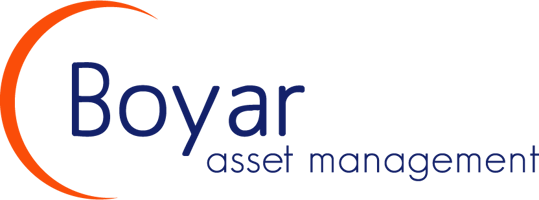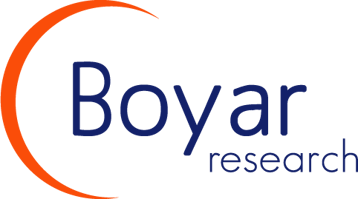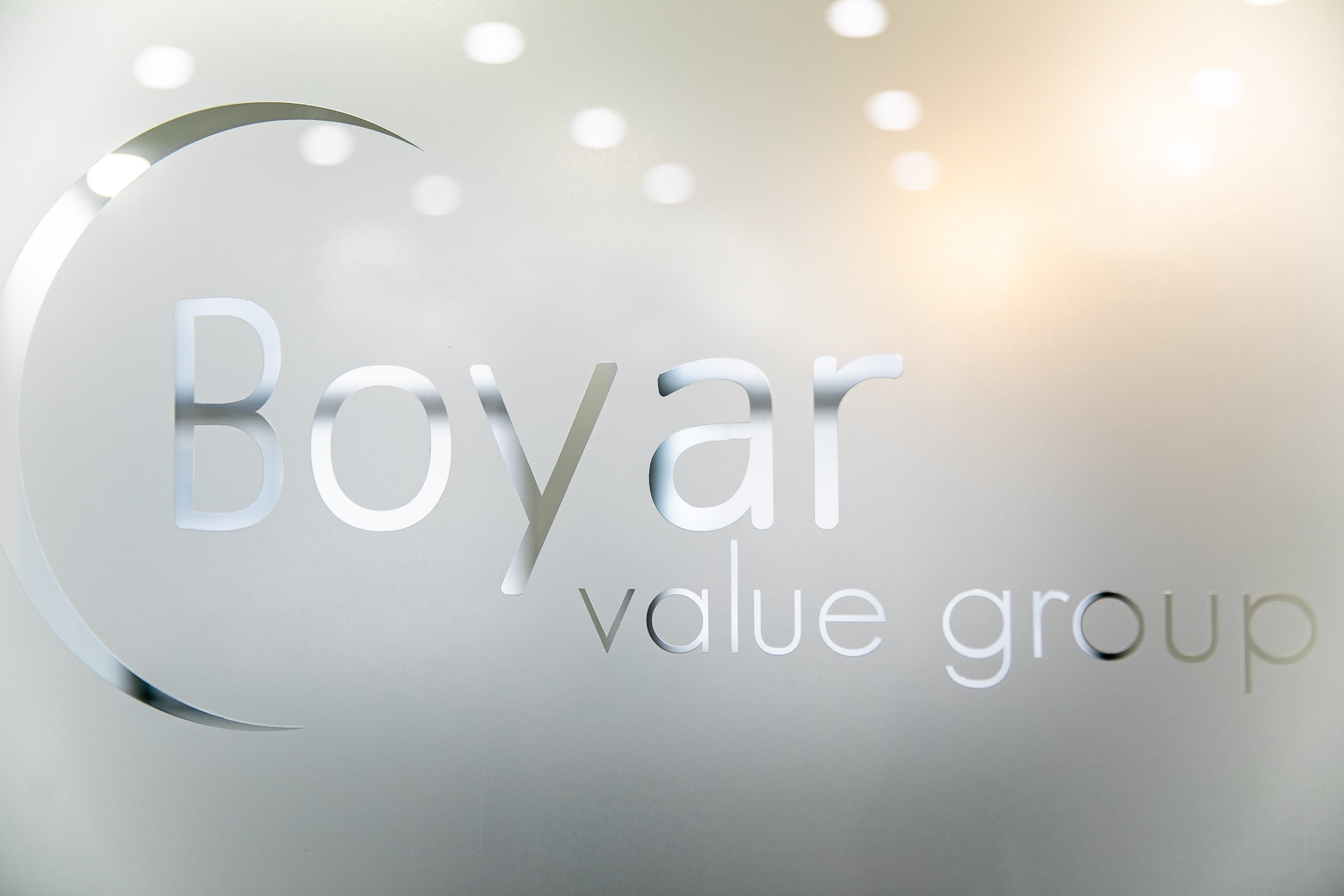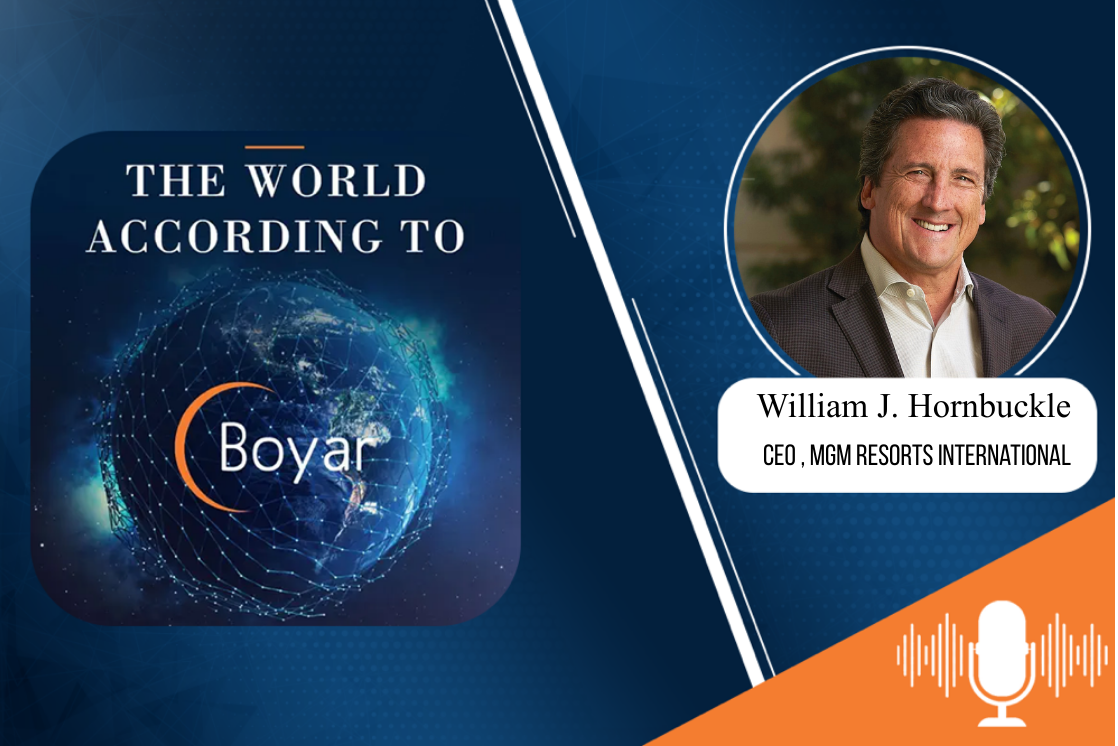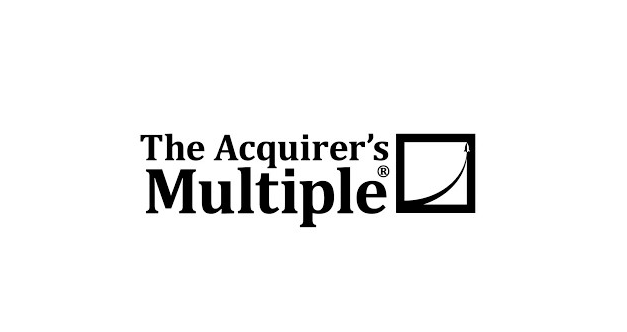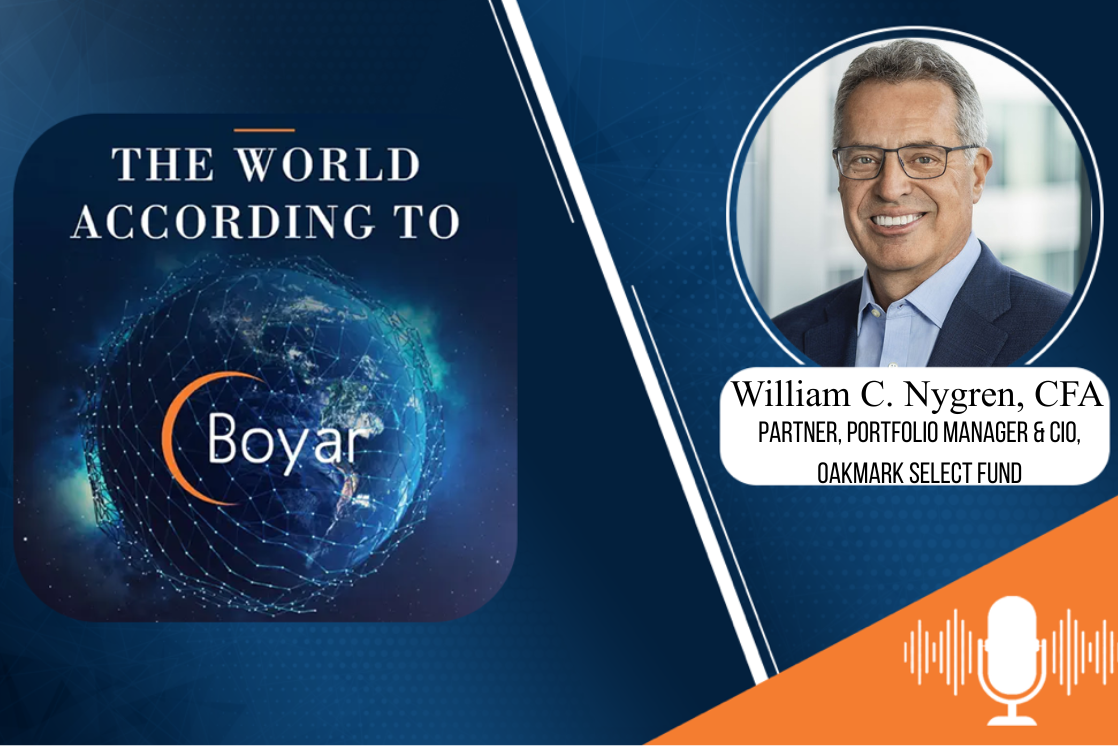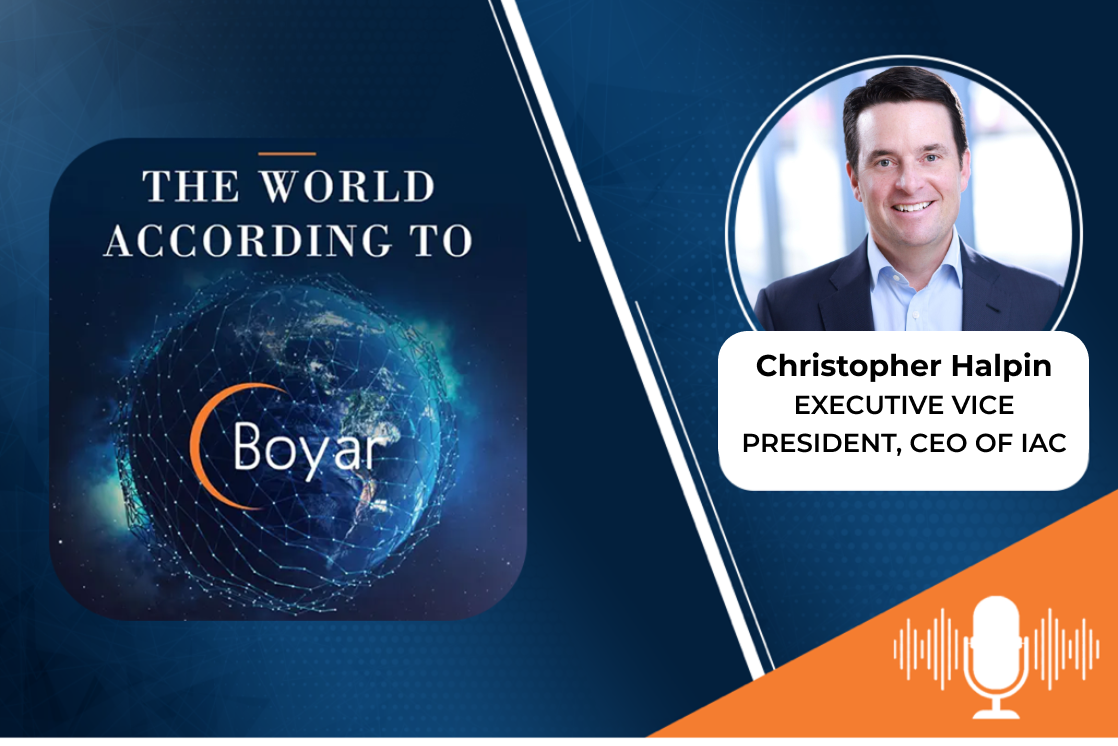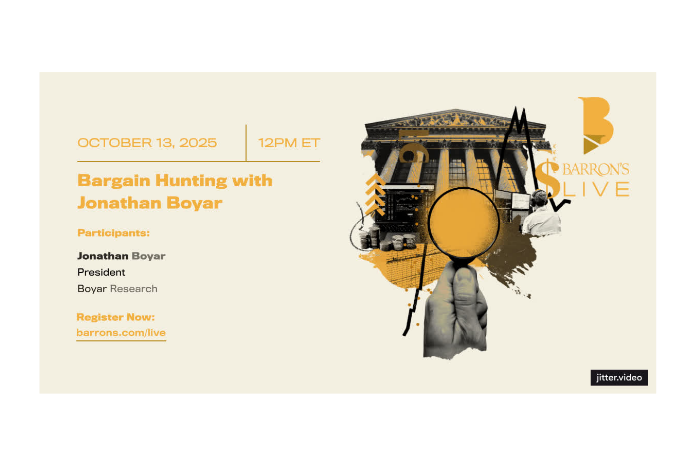Chip Brewer, CEO of Topgolf Callaway Brands discusses how he turned around Callaway's traditional business and more...
The Interview Discusses:
- How he turned around Callaway’s traditional business.
- How “off course” golf is now larger than “on course” golf.
- How Topgolf is increasing participation in traditional golf.
- The economics behind a Topgolf location and why scale matters.
- Why he does not believe a rising interest rate environment will impact the expansion of TopGolf.
- How he had the confidence to “bet the company” and purchase Topgolf in 2020 (during the throes of Covid).
- The significant opportunity they have with Toptracer.
- His thoughts on the current valuation of Topgolf Callaway Brands.
To request a copy of our report on Topgolf Callaway Brands that appeared in the recently released Boyar’s Forgotten Forty, please click here.
About Chip Brewer:
Oliver G. “Chip” Brewer III has served as a Director and the President and Chief Executive Officer of Topgolf Callaway Brands Corp. (“Topgolf Callaway Brands” or the “Company”) since joining the Company in March of 2012. Mr. Brewer oversees all areas of the Company, and under his leadership, Topgolf Callaway Brands has transformed into an unrivaled tech-enabled Modern Golf and active lifestyle company, with a portfolio of global brands including Topgolf, Callaway Golf, TravisMathew, Toptracer, Odyssey, OGIO, Jack Wolfskin, and World Golf Tour (“WGT”).
Mr. Brewer served as Director of Topgolf International, Inc from 2012 until March 2021, when the business merged with Callaway Golf Company, and served on the Board of the National Golf Foundation from 2014 to 2019. He was the President and Chief Executive Officer of Adams Golf from January 2002 to February of 2012.
He is a 1986 graduate of the College of William and Mary, and he received his MBA from Harvard University in 1991.
Click Below to Read the Interview Transcript
Transcript of the Interview With Chip Brewer:
Jonathan Boyar (00:05):
Welcome to the world according to Boyar, where we bring top investors, best selling authors and business leaders to show you the smartest ways to uncover value in the stock market. I’m your host, Jonathan Boyar. Today’s guest is Chip Brewer, CEO O of Topgolf. Callaway Brands. Chip was president and CEO O of Adams Golf from January, 2002 to February, 2012. Chip then joined what was then called Callaway in March of 2012 as a director, president and c e o where he oversees all areas of the company. And under his leadership, Topgolf, Callaway Brands has transformed into a tech enabled modern golf and active lifestyle company with a portfolio of brands including Topgolf, Calloway, top Tracer, Travis Matthews, Jack Wolfs Skin, and much more. Chip, welcome to the show.
Chip Brewer (00:58):
Thank you Jon. Great to be with you.
Jonathan Boyar (01:00):
I’m really excited to have you on the world. According to Boyar, Boyar research has been following Callaway for quite some time now. I think the first time we profiled the company was in 2009 when I had a market cap of about 489 million. Today the company’s Mark Cap is well over 4 billion and it’s a vastly different business. In large part, these are the changes you have implemented. You know, I look forward to today to hear more about the Topco Callaway story and where you see the business going in the future. So you joined in 2012. At the time, the business, meaning the legacy Callaway had gone through, I believe about five CEOs in the decades since the founder Eli Callaway passed away in the early two thousands. Business really was not in good shape. Then why did you think you could turn around the company when so many other people had had failed?
Chip Brewer (01:53):
Good question, Jon and I was obviously hopeful that I could turn around the company, but was I sure. I don’t know if I was sure or not. I had been around the golf business for some time at that point. I had been at Adams Golf for 14 years. I ran that company for 10 years. But Adams Golf was a niche player or at that time the industry had its top tier players, which are candidly still the top tier players. The Calloway Tailor-made Titleist Ping, if you would, which are scaled OEMs. And then it had a really strong second tier of players, Adams, Cleveland, other brands that have since gone away, Tommy Armour or Lamar. But those second tier don’t really exist anymore. It’s kind of consolidated even further. And it was such a great opportunity for me because I, you know, really loved the game of golf, the golf industry, and this my chance in the majors right to step up and see how I could do at a big brand.
(03:07):
And the opportunity was also one that wasn’t doing well. But it’s an incredible brand with great resources. But the first day I walked in, Jon, I was intimidated too. I didn’t wanna show that. But the headquarters out here is big and when you’re running a company, we had more people in r and d at Callaway than we had in the entire company that I had run prior to being here. So it was a stretch opportunity for me as well. And, but I was foolish enough to believe that maybe I could add a little value and we’ve had a nice run.
Jonathan Boyar (03:43):
That’s an understatement and that’s a nice run. What skills did you really learn at Adams golf that you were able to translate into your success at Callaway?
Chip Brewer (03:54):
Well, by the time I got here, so I knew a lot about the golf industry. I grew up around the game, so I grew up like a lot of other avid golfers. I grew up caddying in the Northeast. I worked in a golf shop, I played high school golf, college golf. So I have a family that is very involved around the game. My dad was a great player, still a good player. So knew golf as a traditional golfer and had a passion for it. But Adams golf makes you scrappy, it makes you learn. I was there 14 years by the time I got here, I kind of knew the industry and I was very hands on the equipment side. So coming here with the strength of the brand and the r d resources, it was a neat opportunity and we were able to kind of bring the company back to some of the basics that Eli used to do and focusing on outstanding golf equipment. That is what we call D S P D. And I’ll unpack that for you in a little bit.
Jonathan Boyar (05:06):
It’s interesting, you mentioned your dad was a fantastic player. You played college golf, the prior permanent c e O of Callaway golf, a guy named George Fellows. I think one of the things you probably don’t remember, but you, you were in our office 2013 2014 and you mentioned that he was a tennis player, not a golfer. Obviously you don’t need to be a golfer to run Callaway Golf, but how much do you think that’s,
Chip Brewer (05:33):
You’d say that Jon, but it’s interesting cuz in theory you don’t need to be an avid golfer to run a golf equipment company, right? It should be doable that you could just bring in a great business person and they can successfully run a golf equipment company. But then when you actually look at the tape and look at the track record, it is a perfect record. It never works. So every successful, in my mind, successful c e o of OEMs that in the modern era, they have all been cut of a similar cloth in that they have a background somewhat similar to what I just talked about, Eli Calloway, even the modern era, while you align at Titleist who clearly did an incredible job, Mark King at TaylorMade, even current Dave Mar Titleist, we all have to have a, seems like even though I get why it doesn’t, in theory you should be able to rely on other people’s expertise for understanding the consumer and understanding the nuances of the product. But in practice it seems to work and it only seems to work when you have somebody that really has firsthand understanding of those things. And it could be, there’s so many nuanced decisions that go into a successful c e o of an equipment company, whether it’s tour sponsorships or product decisions or how the marketing’s positioned, et cetera, where you just bring in a classically trained marketer or classically trained c e o. Candidly, it doesn’t generally work.
Jonathan Boyar (07:27):
That makes a lot of sense except for one part of the equation because you are shifting or you’ve shifted to something called modern golf, which is something I I love to talk about and I would think was someone who is a golf purist or who grew up in the game might not really like that transformation. So you have to also keep somewhat of an open mind too.
Chip Brewer (07:50):
Yeah, that’s right. But first foremost, when I got here in 2012, we needed to restore Callaway to being the number one golf equipment company in the world and turn around our core business. So job one was that and once we were successful at that and then you know, you start looking at what can be next and how do we grow from here. But until you get that job one done, it is all about that job one, we’ve been fortunate in that we’ve had the opportunity to do more than just that job one here. But you know, we don’t wanna underestimate that importance and it’s still that way, right? It’s like we’re gonna talk a lot about all the growth initiatives and how much we transform this business. And we probably won’t talk about the Paradigm Golf Clubs, but the Paradigm Golf Clubs are freaking awesome and they are again, the expression D S P. So they are pleasingly different, demonstrably superior. And making sure that we continue to do all of that is that’s critical. We can’t get lost in our new initiatives and not remain competitive on the golf equipment side. Why we have these fancy new growth areas that we really do have in spades here.
Jonathan Boyar (09:24):
Yeah, I mean the r and d that goes into some of those clubs you just mentioned are, are unbelievable. I think what you spent 60 million a year on r and d or so, is that right?
Chip Brewer (09:36):
We spend a lot of more than that now. So Jon, we spend quite a bit across all the different business units, but even in the core business it’s a significant and important investment and it helps differentiate us.
Jonathan Boyar (09:49):
Yeah, I mean you have people work for Nasaa who are designing clubs.
Chip Brewer (09:53):
It’s crazy and it’s exciting and it’s fun and we literally have rocket scientists and the software engineers now because of the AI significance and a lot of really smart, highly motivated people working on golf equipment. But then at the same time we’re selling nachos and entertaining you as you’re going to halts in Long Island. And it’s kind of cool because golf is so much bigger, broader, higher growth, the energy around the modern game and the sport and our position in it, which is very unique and hopefully leading.
Jonathan Boyar (10:33):
So you, you recently changed the stock symbol from E L Y, which is your founder to M O D G short for Modern golf and you change the name of the company to top golf Callaway Brands. For those of you who don’t know, can you just define what modern golf is?
Chip Brewer (10:52):
Yeah, so modern golf is the combination of off course and on course golf. Golf was only, you know, around at golf courses and green grass ranges forever, right? And it was a very small, very exclusive, unfortunately limited business and sport. And the National Golf Foundation put out some stats on this recently where golf course golf is now larger than Enco golf. And so how the world is going to experience golf, it may be like I did, I grew up around the game in traditional golf and I caddied and I played on a golf course and everything that goes with that. But I think well already more people are gonna experience golf at a top golf than are gonna experience golf on a traditional golf course. And that change is gonna accelerate and it’s exciting as heck and it democratizes the game. It brings in new energy, structured growth, younger demographics, more diverse demographics, it will feed traditional golf. I mean top golf’s the greatest thing that’s happened to golf since Tiger Woods. It’s just transforming the game. And there are other avenues around the game that are helping on this, but top golfs by far and away the biggest factor in there. So modern golf is a new interpretation, which is the only reasonable interpretation of golf that includes both traditional golf and golf course entertainment, golf concepts.
Jonathan Boyar (12:35):
So I mean you mentioned top golf and just briefly what for those of you who don’t know, and I imagine there are a lot less who don’t know about this now obviously it’s growing rapidly. What is top golf?
Chip Brewer (12:48):
Top golf is a golf entertainment venue concept that takes a driving range and crosses it with a nightclub and high energy entertainment complex that is a total engaging, totally inviting, fun, easy place to go, have fun with friends and sometimes practice golf but not really. It’s more social, more entertainment. And it just changes the approach to golf because it’s totally fun. It’s in big pie density locations usually. So it’s not remote locations and different parts of the day it has a whole different vibe in the afternoons or the evenings and the weekends, it’s date night, it’s also birthday parties and corporate events. But really appeals to everybody, golfers and non-golfers. You literally talk to people now and they’ll, you’ll ask ’em, do you play golf? And they’ll go, no, but I top golf, it’s like a verb. And the tam for golf, so like golf equipment oem, when I put that hat on, I’m really looking at about 8 million people that I’m targeting annually. So there’s about 8 million that spend an adequate amount on golf to drive golf equipment revenues. The TAM or who we would look at for targeting for top golf is everybody. And so it just changes the dynamic of the sport as we build these out and make this national and international concept more available because you know, it seems to resonate so highly with people.
Jonathan Boyar (14:40):
Can you just break it down, if you wanted to build a top golf three years from now, I think that’s the lead time or so to, to build.
Chip Brewer (14:47):
Yeah, so it’s, it’s a lead time on a top. Golf can be anything from 10 years. Cause if you’re working with the municipalities and we’re working with the city of El Segundo on on that site, which is the one near lax, a big one that converted a municipal golf course that was losing money and not successful into a top golf along with a 10 hole part three course. That was a 10 year project. We’re working with the port authority here in San Diego. That will be a long tail project. So these things can take some time to work out if it’s totally an easy project, it’s still three years from start to opening day to get a top golf from concept permitting, construction opening. They are fairly capital intensive. They can be anywhere from ballpark 20 million to 55 million to build. We use reap financing to finance 75% of that.
(15:55):
And there’s a fair amount of proprietary knowledge, some proprietary technology and you know, at some point during the podcast we’ll talk about how we got comfortable doing the deal, right? So they’re not easy to do quite frankly. And there’s a operating acumen that goes into it as well as a ability to choose those locations and successfully open and negotiate ’em. But when you do ’em right and we know how to do ’em right, they are very attractive return. So 40 to 50% cash on cash return or a levered return of 40 to 50% in in that third to fifth year.
Jonathan Boyar (16:33):
So you have a, in a lot of these, a partner I guess it’s more of like a REIT that helps you with this. How does that relationship
Chip Brewer (16:40):
Work? Well the REIT does the financing for us, so takes some of that capital costs out and that was especially important in the early days when the company was private and you know, we were an investor and then there was private equity and a couple other key investors. But they’ll finance 75% of it at a a reasonable cap rate and it’ll allow us to do more of these on a somewhat more efficient capital structure. But it’s still requires a fair amount of capital going in. So you’re still putting in ballpark seven and a half million per location more than that for the bigger ones.
Jonathan Boyar (17:22):
I mean with, with a 40 to 50% cash on cash return, you still have a lot of margin for error. But you know, with interest rates rising, does that worry you with future returns and future expansion opportunities?
Chip Brewer (17:36):
Not really Jon, because here to four, so at this point we haven’t had to raise our cap rates to the, so we’ve with top golf, top golf has become more proven, more credit worthy, et cetera. That’s probably offset some of the rate pressure that otherwise would’ve been there. But even if rates continue to move up a, there’s enough margin in these things that we would be able to absorb that. But B in more importantly is that we’ve been able to outperform our stated profitability goals for these things. So we’re getting better at this. We’re not only creating structural growth but we’re also improving the profitability of ’em. So yes, lower cost money would be better <laugh> but of the things that keep me up at night, that’s not it. As long as we continue to move on the past, we’re moving with these venues, we’re in pretty good shape and we’re wildly excited about it.
Jonathan Boyar (18:43):
So internationally you’re going with partner franchise partners. How come in the US because you have a lot of green space, I mean I think you said you have 200 or 250.
Chip Brewer (18:55):
That’s right. We think we can do 250 of ’em in the US
Jonathan Boyar (18:58):
So you can get there a lot faster if you franchise them, sometimes slows better. But if you can find the right franchisee who knows what they’re doing, we Is that something you would consider
Chip Brewer (19:09):
Here to four? So we never say never on many things Jon, right? Unless it’s something to do with ethics and integrity where there’s very few nevers. But at the moment we like in the US and the UK and we haven’t determined what we’re gonna do in Canada yet, but we like owning them and one of the reasons for that is we get to control the culture and the experience so strongly. And so if you look at some of these people that have worked for franchised operations and then move back and forth, you hear that theme a lot. And so your experience, I think it was before we hit record here, when you were talking about going to Holtz and you talked about how good the people are, the people we call ’em Playmakers at top golf, an incredible difference maker and how we recruit, train, being able to run national campaigns across things, advertising programs.
(20:16):
We just signed a national partnership with Honda. There’s a lot of merit to doing that the way we’re doing it in the UK and in the us which we also have a hundred percent good. Great knowledge and expertise when you go into the Middle East China, I’m looking at you, you’re giggling, right? Yeah. Obviously leveraging some other people’s expertise, local connections, knowledge and financial resources in those markets with options to purchase equity in the future. Negotiated in the to the deal, but options not obligations. That’s a really good balance and And we’re very happy with that.
Jonathan Boyar (21:04):
Yeah. And they’re trying to get a land approval in Abu Dhabi or wherever is probably difficult.
Chip Brewer (21:10):
You generally end up partnering with a Yeah, somebody that has that knowledge, connection, expertise and you know we have the Dubai site and our partner is very well connected there and does a great job and we got an amazing site going. So the strategy that they employed and we’ve continued on, that makes a ton of sense and we’re excited about it.
Jonathan Boyar (21:35):
So what’s the competitive advantage? You obviously have the Playmakers as a top golf, it costs a lot of money and you have the technical know-how. Is there anything else?
Chip Brewer (21:46):
A lot of it Jon, and this is one of the things that I, you know, I spent 10 years on the board of Topgolf prior to us merging with him. So when I got to Callaway we had a minority investment in that business already. Topgolf and I spent 10 years as a board member there gambling, watching him grow, watching him learn, watching him make mistakes, gaining a lot of insight and knowledge. It’s a great business if you do it right and it’s a very difficult business if you don’t do it right. And we’ve already had competitors come into the space and build a few venues and say no moss, this is not for us. We’re moving to a a different concept and I watched that at Topgolf, some of the early venues and operations. You get a few wrong, it’s really tough. Even at Topgolf they didn’t make much money through 2019. So you need a bunch of venues, you gotta be really good at operating ’em, you better have a world class real estate development team and building out the venues. This is a business that does really well at scale, not so great until you have that scale. And there are some other barriers to entry, right? Where it’s like once you put one in, putting one next to that one is probably not the easiest or smartest thing ever for somebody to do. So good structural business from that perspective,
Jonathan Boyar (23:23):
What’s the biggest barrier of entry to creating one of those? So we mentioned earlier I went to the Postville location, it’s exit 62 up Long Island Expressway. So people who are not familiar with the area, it’s a decent drive from New York City. Is it because land’s so expensive that you can’t have it in more community locations for metropolitan areas? Or is it, what’s the strategy behind that?
Chip Brewer (23:47):
Yeah, it really is use of land, right? They do well in high traffic, high density areas and Ville is in itself a high density, right? But it is probably too far out to pull a lot of traffic outta Manhattan. But it’s got high density, high net worth, high protractive demographic market in and of itself out in Ville. And you know, the barrier to entry of doing these is the expertise and then if you just do one, it doesn’t really add up to anything. You’ve gotta do multiples of them to scale it up. You can’t have a real estate team. I mean they have a world-class real estate team and operations team that you have to be able to share across. Right now we have 82 owned and operated venues. So we’re last year to a little over 1.5 billion. So when you have that level of scale, you have the resources to support all these things appropriately. You just open one venue and you think you’re gonna have the expertise to identify, develop and run ’em. You might, but good luck. It’s could be a lot of work.
Jonathan Boyar (25:08):
So you said you know you can get about 200 in the US you’re around 80, 82 now, but is there a diminishing return? Is the hundred 80th site you think gonna be as popular and profitable as the ones you’re building now or are you hitting the kind of low hanging fruit in terms of good geographic areas?
Chip Brewer (25:28):
We think that we’re gonna be able to do two 50 in the us will there be some diminishing return maybe, but it’s pretty far out and we’re also improving the economics of the model as we go along. You know, when we did the top golf transaction, we talk about the profitability of the individual venues as EBITDA margin. So EBITDA margins were in the 29% range. We thought well let’s see if we can get, you know, we put a goal out there getting to 32%. Now we’ve exceeded 32% and we’re not putting another number out there yet, but we believe we’ll be north of that going forward. So as you’re improving the economics of the model and I talked about on the last earnings call these new ones like in Boise and Wichita that we opened that are a new more cost effective model for these mid-size markets. We’re pretty confident on the economics of this and the growth path.
Jonathan Boyar (26:28):
So before, you know, we alluded to the top golf deal that you did and in retrospect to use a different sports metaphor, it’s been a grand slam. I mean it’s been a fantastic use of capital. However the deal is announced in October of 2020, which seems like ages ago when it’s really not. That was before we knew the good news on the vaccine front. So you took a big gamble,
Chip Brewer (26:55):
It was a little bit of a bet the company and it certainly bet my career and reputation play so,
Jonathan Boyar (27:03):
So what gave you that confidence? I mean those are the exact words. What I was gonna say was that the company type of deal, like and if you read the outsiders or other business books, you know CEOs do that, you know maybe you’ll be in the next edition <laugh>. Like what gave you that confidence?
Chip Brewer (27:20):
Well being on the board, be honest with you Jon. So I didn’t approach this lightly and I didn’t approach it without a candid, I had insider perspective. So we had talked about, oh at the Callaway board strategically was there a way for us to acquire or merge with top golf? We had talked about it numerous times through the years and we couldn’t ever get that done because top golf was so proud of its valuation that it thought it was going to be much more valuable than Callaway Golf. So even at that stage when it had almost no profits, so it just wasn’t a deal that could get done at that time. Covid hit and they were ready to go public. So they were gonna go public in mid 2020 but Covid comes in March, the world shuts down and they weren’t adequately capitalized at that stage.
(28:22):
So they needed a plan and that dynamic in that environment created an opportunity At the same time I had been on that board for 10 years. There’s two things or three things that I thought I knew that I could bet on. One was the consumer loved top golf for 10 years. We never had a consumer issue. We had plenty issues, <laugh> issues longer than I can bore you with longer than my arm, right? A list of issues. But the consumer loved it, they loved it in different economic climate. Let’s see, was always as stupid as it sounds, the biggest complaint was the weight was too long, right? And so, okay, that’s a good problem. I like that as my starting point. The second thing that I was highly confident on was the real estate team. They identified and opened venues and I guess that second and third so the real estate team could identify these sites and they were world class, still are, they just do a phenomenal job.
(29:36):
It’s a unique skill. I watched it develop from mom and pop approaches, which candidly that’s risky capital when you’re doing it that way to world-class team. And then our ability to open these venues. So cuz it’s such a capital intensive thing, right? You gotta feel good that you’re gonna be a, if you’re deploying that much capital, you’re gotta have a high certainty that it’s gonna have that return that you’re putting on your Excel spreadsheet. And I felt good about those points and that’s what gave me the confidence to propose it to the board and the board. It wasn’t from left field, although the timing was unique. A funny story on that Jon so literally worked on it all summer, I mean it was consuming and was fortunate cuz the golf equipment business was doing great by then after a near death experience. Quite frankly, just like everybody else, when analysts are asking me, well how long can you last with zero revenues?
(30:39):
And I’m like, how the hell do I know how long I can last with zero revenue? So I’m guessing not long, didn’t model that one. So we get through the zero revenue conversation at the same time we’re negotiating to buy top golf, which sounds insane, but that’s the way it works. Get the deal announced and so it’s sometime in late fall and it’s literally the weekend that I wanna, we’re gonna announce it on Monday. One of the variants of Covid starts spiking again and I know the stock is going to get destroyed if I announce this deal into this and I’m like literally calling up advisors and board members, I’m like do we do it? Do we don’t? And we do it, the stock does get destroyed. It goes from like $20 or $21 to 15 the week or two after, right? Because my existing shareholder base gets scared, which I get it. And then it recovers wildly goes way back up. And then since then has had its mandering path but it wasn’t as smooth sailing as it always looks in the background. But it was something we had confidence of and the reason we have confidence is cause I, I had 10 years of experience watching this thing develop.
Jonathan Boyar (31:56):
So part of what you bought bought is somebody called Top Tracer with the top acquisition. For those that don’t know, can you just briefly explain what what that is?
Chip Brewer (32:05):
Yeah, top Tracer is the leading range tracking technology but it’s also on, you’ll see it on TV quite a bit too. So if you watch PJ tour events or the majors, you’ll see these lines draw on the track the golf ball during flight and it’ll tell you the ball speed, the launch angle and where the ball ended up, et cetera. And so the cool part about that is it converts driving arranges and makes ’em a modern tech enabled location. So you would go to a driving range and be able to use Top Tracer to either play different types of entertainment games or a more improved practice experience. So literally I could be going to a driving range and hitting shots and practicing my game and getting better data on that and doing what’s called a combine. And then my niece or nephew could be next to me knocking down a virtual castle.
(33:11):
And when you put it in driving ranges, if it’s a driving range that charges for the buckets of balls or time the revenues go up 25 to 40%. So wildly changes what driving ranges are all about and we use it at all the venues we’ll have it in all the venues by the end of this year is the leader in this space. I’ll tell you I think that driving ranges will move to it almost a hundred percent in the future because it’s such a better experience and you know it’s transforming that it’s a great synergy with Callaway because we get all the data and the ability to have that interaction and with the golf consumer. So if you’re practicing and you know, I’ll know that you were practicing and how you were hitting your six iron and I’ll be able to hopefully help you become a better player and have more fun doing.
Jonathan Boyar (34:10):
And is it a big CapEx for the driving range?
Chip Brewer (34:13):
No, this one’s pretty small. So the venue business is a pretty capital intensive business. Literally the driving range signs a five year agreement with us. All they’d have to do is get power and data to the driving range and we’ll take it from there and then they sign a agreement with us and pay us either per day or something along like that for over a five year period of time.
Jonathan Boyar (34:38):
So there’s no real upfront cost. So it’s a no brainer for them.
Chip Brewer (34:42):
Minimal upfront cost a hundred percent.
Jonathan Boyar (34:45):
And I think you said that you have about 3% of the 610,000 bays out there are have top tracers
Chip Brewer (34:56):
Very early days, particularly in the green grass, particularly in the US as you would expect in Asia it’s going pretty quickly cuz they have a lot of covered driving ranges there. So we’ll convert that market really quickly. And in the US there’s not as many other than top golf, right? A good for a covered bay driving range doesn’t really exist that often. So you really gotta go after what we call green grass driving ranges, which doesn’t mean it’s actual grass but it just a driving range whether you’re hitting off mats or not. That is one layer, one level if you would and not always most modern or engaging concept, but we’re gonna make ’em better.
Jonathan Boyar (35:42):
Is the competitive advantage there, the Callaway sales staff who’s already selling into the range or
Chip Brewer (35:49):
Yeah, our competitive advantage in this space is that our installed base, the quality of the games, the network if you would across it so that you, we can leverage the same reach to consumers and tournaments and programs across, you know, by the end of the year it’ll be I think 30,000 bays that will have installed. So you’ll be playing competitions and be able to play the St. Andrews challenge against your friends and you need a big installed network to make that fun. And then you know, our reach, because of our reach across modern golf, we know all these range owners and green grass locations and we can do some fun things with that.
Jonathan Boyar (36:35):
So something that I guess it premieres in two days, something called Netflix full swing, you know it’s being released in a few days. It seemed like a similar type of docuseries that they had for Formula One. Is this anything that, do you see the same thing happening that happened with Formula One to golf or is that just wishful thinking?
Chip Brewer (36:59):
I don’t know. I think golf probably more. Formula One in the US was pretty nichey prior to the big growth spurt and the Netflix documentary, which obviously had a an amazing impact on that sport and the awareness and participation. So we’re not starting in a similar spot, but there’s a lot of excitement about this Netflix full swing and Jon, there’s just a ton of really cool things going on in and around modern golf right now. I mean from the tours to top golf to other golf entertainment concepts and Five Iron and golfs on and the Netflix documentary, they’re now, it’s this new concept called Tomorrow or T G L, which is a Monday night competition that they’re gonna try to launch in 2024. There’s just a lot of energy, a lot of money, a lot of momentum around the game at a time where if you accept my definition of golf as golf is modern golf, it’s the combination of on and off course golf, which there’s no question whether it’s going to grow. There’s so much energy and money being invested in and around it. New venues, our venues alone at Topgolf will add three to 4 million unique new modern golfers every year just on the venue installations alone. So okay, that’s essentially 10% growth for the entire modern golf ecosystem just on the venues.
Jonathan Boyar (38:57):
So by building these, I think the stats are 50% of the people who go to a top golf of, or not golfers, but 75% of them have a interest in playing golf after, is that correct?
Chip Brewer (39:13):
That’s correct. Although over time what you’re gonna see is even a smaller percentage of them are gonna be traditional golfers because as we build out the, so it’s already a little bit is it only makes sense, right? There’s only 25 million traditional golfers, there’s 28 rounding golf course golfers en course traditional golf grew last year by 500,000 golf course golf grew by 3.1 million and we’re gonna add 11 venues a year. 11 venues a year is gonna add three to 4 million more uniques, other people are doing more and then that’s gonna have a positive impact on the traditional game of golf because some portion of those, no matter how you research it, it always comes back that experience a top golf increases your interest and desire to learn traditional golf. And we’ve got some interesting stats, you know, on that. But there’s been just multiple surveys and they all come back with that. It’s just in a really great spot right now and the Netflix thing can only only help. I hope it has the same impact that it did on Formula One, but it’s gonna have some positive impact and it’s gonna build on these other things that are going on. Which candidly the biggest thing going on, you know, other than is the venue growth. We’re driving same venue sales growth and venue growth. We’re putting more golf clubs in people’s hands and they’re having a great time with it.
Jonathan Boyar (41:00):
So I just wanna just briefly touch on, on valuation, you know, one thing that has weighed on the stock is that investors believe golf is gonna be a pandemic fad besides people being able to work from home more often. What makes you think and also besides the funnel from from top golf that this is just not another pandemic fad because when you joined the company in 2012, they were talking about the death of golf.
Chip Brewer (41:29):
Yeah, golf’s been pretty low growth over, you know, an extended period of time it had that one, you know, nice run but then it’s been, we’ll call it stable Jon, but you know, your question’s a little leading cuz it’s sort of like asking Mrs Lincoln, you know, besides that, how was the play, right? <Laugh>, so top golf does exist, so it is one of the factors I, you know, you can’t factor that out. I do think that is one of the reasons like why did golf grow last year if the covid pandemic was going to recess and obviously it could have, I didn’t know, now you have to be arguing that it is gonna recess, but it didn’t recess last year so there was no reversion. What we have here is a delayed reversion and maybe, but not only did it not have a reversion last year we grew on traditional golf, 500,000 participants.
(42:32):
So it’s sort of running in the face of facts, the game of golf, the sport of golf has a lot of energy momentum and work environment, you know, hybrid work, remote work is clearly very good for it. The growth of top golf there didn’t ever exist, something like that. There wasn’t this 3 million new participants coming at the game the previously, so they’re fundamentally different situations and I understand why people would be concerned about a reversion, but most things that have reverted have already done that. The fear of a top secret delayed reversion is, is still, I don’t know how you would make that argument either, I guess.
Jonathan Boyar (43:31):
I guess it would have to be a deep recession coupled with work from home being much less profit.
Chip Brewer (43:38):
That’s right. And you still would have the top golf impact and all the other money coming in and and energy around the game to counter that. And golf has not been particularly sensitive traditional golf to a recession in the past other than the great recession in 2009, which it did go down low double digits. So the 10, 14% decline in golf equipment sales that year. But that was literally financial meltdown bigger than anything. It wasn’t a real, it was something extraordinary and other mild recessions were not that sensitive to it. I can’t answer the question as it relates to top golf, but you can see that Topgolf is the same venue. Sales have been ramping up, not down.
Jonathan Boyar (44:32):
Yeah, I mean I had a great time at Top Golf, but certainly wasn’t cheap by any stretch, but I had a great time. If we have a bad economic period, you know, are people gonna pay a couple hundred dollars to go to that? I, I don’t know if you looked into any research on that or just, you won’t know until you do it.
Chip Brewer (44:51):
No, we’ll know it if we see it Jon. We’ll obviously look for it, but I can tell you this, you know, you can look at our, we announced our same trend sales quarterly, I’m assuming the economy didn’t strengthen over the last year and our same venue sales are increasing during that period of time. I’m not here saying that’s not guidance. I’m not saying we’re gonna constantly grow or increase at an increasing rate, but we, there’s just no sign of it. So we’ve got a strong consumer, it’s engaged, it’s clearly on trend and that it doesn’t seem like a reasonable huge risk to us right now.
Jonathan Boyar (45:31):
Right now you’re trading at about, you know, we look at everything e v to EBIDA for the most part about nine times 20, 23 estimates below golf industry transactions. You’re really not getting any credit for the fast growing top golf top tracer business. What gives you the confidence that the street’s gonna eventually properly value you?
Chip Brewer (45:56):
Good question Jon. You know, that is a source of bewilderment at times. We went through a period right after we did the transaction where the stock went down, then it raced up and it went up to $37 a share at its peak and would’ve been some multiple in the high twenties of ebitda. And when people started worrying about a reversion and growth became a little more out of style, you know, we’ve traded down and you know, we do think we’re undervalued right now. I guess the faith is that if we continue to demonstrate that we’re gonna be able to continue to deliver profitable growth and we’re also at a point, you know, where we’re transitioning very quickly from, we’re not one of those businesses, were all of the cash flow is way out in the future. That’s the stuff that I understand. Some of the T we’re transitioning to positive cash flow this year. So we’re optimistic that as we can, if we can continue to perform at this level and generate strong growth and increasing profitability, the markets are usually pretty rational on that over time. They’re not always rational in the short periods and that creates opportunities for people. But profitable growth, cash flow, Jon doesn’t usually go outta style. So we’re gonna try to deliver on that.
Jonathan Boyar (47:27):
And you’re putting your money where your math is, you bought stock in the open market twice in the past year as well as the cfo. You know, how come the company’s not being as aggressive as as you are? Obviously you can make your own decisions for your own self personally, but is there any anything to read into that? Because
Chip Brewer (47:46):
We’re our capital? So we basically, it’s a simple playbook, Jon, when we did this deal with Topgolf, right, we committed our resources. We’re putting in hundreds of millions of dollars a year of incremental capital into building venues. So essentially our free cash flow became committed and it’s committed to building venues. The venues generate a 40 to 50% cash on cash return, the same venue sales growth has continued to scale, the venues are continuing to be more profitable. So we feel great about that allocation of capital. But we’re fully committed on that. And you know, we also want to maintain a leverage ratio as close to three or lower as we can. We’re a little over that right now. Buying back stock is essentially a capital allocation decision and I made my personal capital allocation decision. I don’t have the opportunity that the company has on building these venues, but we’re very excited about how we’re deploying that capital.
Jonathan Boyar (49:01):
If the street remains irrational and doesn’t give you the valuation that I think and assuming you think you deserve, would you ever consider spinning out a portion of top golf to help highlight the value of it?
Chip Brewer (49:18):
Well, we consider all things so you know, obviously Jon, we’re, you know, shareholder value is the first on a list of all important metrics that we’re focused on. So we’re sophisticated on that and are constantly evaluating different approaches to that. But I don’t really want to get into speculating on what different avenues might be on that. We’re gonna continue to execute. We think we’ve got a unique asset here in top golf Callaway brands. It’s, we’ve got structural growth, improving profitability. We’re gonna make that transition to free cash flow generation this year. We’re creating a leadership position and really a unique competitive advantage in what is a very attractive space right now. So we’re gonna focus on that for the moment.
Jonathan Boyar (50:14):
No, I think that sounds like a, a good plan and I, you know, I have to thank you Chip. This has been unbelievable hearing about your story, the top golf story, future of golf. You know, it’s one thing, reading about it is another thing, talking to you about it and going to the venues and, and seeing how exciting it is. And I just want to thank you for hearing on the world according to Boyar. Yeah, it’s great to be on Jon. Thanks for your time and thanks
Speaker 3 (50:42):
For including us. I hope you enjoyed the show. To be sure you never miss another world according to Boyar episode, please follow us on Twitter at boyarvalue. Until next time.
Important Disclosures. The information herein is provided by Boyar’s Intrinsic Value Research LLC (“Boyar Research”) and: (a) is for general, informational purposes only; (b) is not tailored to the specific investment needs of any specific person or entity; and (c) should not be construed as investment advice. Boyar Research does not offer investment advisory services and is not an investment adviser registered with the U.S. Securities and Exchange Commission (“SEC”) or any other regulatory body. Any opinions expressed herein represent current opinions of Boyar Research only, and no representation is made with respect to the accuracy, completeness or timeliness of the information herein. Boyar Research assumes no obligation to update or revise such information. In addition, certain information herein has been provided by and/or is based on third party sources, and, although Boyar Research believes this information to be reliable, Boyar Research has not independently verified such information and is not responsible for third-party errors. You should not assume that any investment discussed herein will be profitable or that any investment decisions in the future will be profitable. Investing in securities involves risk, including the possible loss of principal. Important Information: Past performance does not guarantee future results.
Never miss another podcast click here to subscribe today!
Available wherever you download podcasts:
About The Boyar Family Of Companies
Boyar Asset Management
We have been managing money since 1983 utilizing our proprietary in-house value-oriented equity strategies. We manage money for high net worth individuals and institutions via separately managed accounts. To find out how we can help you with your money management needs please click here
Boyar Research
Since 1975 we have been producing independent research on intrinsically undervalued companies across the market capitalization spectrum and in a wide variety of industries using a business person’s approach to stock market investing. To find out how we can help you with your research needs please click here

